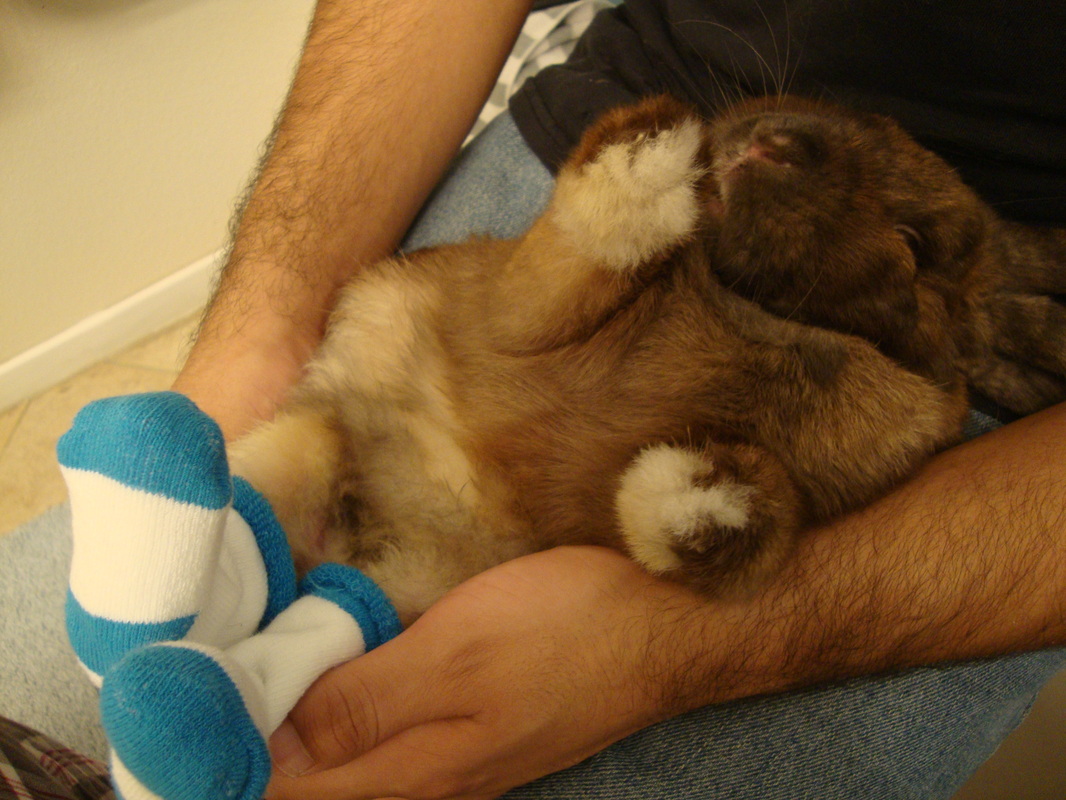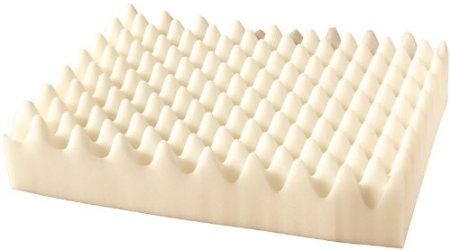Sore Hocks |
Sore hocks and how to handle them.
|
What are Sore Hocks?
Sore hocks, or pododermatitis, is a pressure-related condition in which the “soles” (weight-bearing undersides) of a rabbits’ feet become raw and inflamed, and in particularly severe cases, ulcerated. Pale pink calluses covered by a fold of fur can often be seen on the bottoms of rabbits’ paws, and rabbits can live comfortably with them. Pododermatitis arises when these sensitive areas become highly aggravated. If the state becomes very serious, oozing ulcers will develop, making the rabbit vulnerable to infection. The condition is painful for the rabbit and often irreversible.*
|
*Per the House Rabbit Network, http://www.rabbitnetwork.org
|
Why Sore Hocks and Your Disabled Rabbit?
There are many predisposing factors that cause sore hocks, including:
Unfortunately, disabled rabbits are prone to a number of the factors above- difficulty maintaining hygiene, damp bedding from not being able to control their bladder, immobility (in some cases), and difficulty maintaining comfortable flooring. This makes disabled rabbits particularly susceptible to sore hocks, so we have to be especially watchful to be sure they do not develop and to treat them quickly if they do.
- Poor hygiene and damp bedding
- Rex coats (less fur to protect the hock)
- Long nails (throw too much weight onto the heel)
- Obesity (increases the pressure on the foot)
- Immobility (reduces the use of the toes for weight support, putting more pressure on the hock)
- Unsuitable flooring (such as abrasive flooring that wears on the hocks)
- Large breeds (carry more weight on their hocks)
- Poor physical confirmation
Unfortunately, disabled rabbits are prone to a number of the factors above- difficulty maintaining hygiene, damp bedding from not being able to control their bladder, immobility (in some cases), and difficulty maintaining comfortable flooring. This makes disabled rabbits particularly susceptible to sore hocks, so we have to be especially watchful to be sure they do not develop and to treat them quickly if they do.
How Do You Treat Sore Hocks?
The first step in treating sore hocks is to correct any management and environment-related problems that could be contributing. This is critical and can be done by you as soon as any inflammation is noticed. Get your rabbit's bedding and their bottom area dryer, softer and cleaner to keep the developing sores from getting worse.
Sore hocks can present in varying degrees of severity, and treatment depends on what stage of development the sore is in.
If you notice a sore hock on your rabbit, consult your veterinarian as early as possible for assistance. They can be difficult to treat, but are treatable- especially if caught early.
Sore hocks can present in varying degrees of severity, and treatment depends on what stage of development the sore is in.
- Sore hocks often begin as a clear area of fur on the hock with hardened pink skin in the center. At this stage, treatment is usually not yet necessary. Make changes to your rabbit's enclosure and bedding to make things more padded, and keep an eye on the hock for any signs of worsening.
- As a sore hock advances, you may notice reddening or inflamed skin and callousing of the hock. The key at this stage is to reduce the inflammation while keeping the hock as dry as possible. Apply an anti-inflammatory ointment such as Silvadene or Heal-X or an anti-inflammatory powder such as Neopredef to reduce the inflammation. Use only as little as possible and work into the hock as much as you can to limit residual moisture around the area. As long as the area is dry, you can bandage the hock with vet wrap using shed rabbit fur as a cushion to relieve pressure and help reduce inflammation.
- If a sore hock is left untreated, or if it does not respond to treatment attempts, it may worsen further. The redness may darken and/or increase and the area may begin to look swollen and puffy. An open pressure sore or ulcer may they develop. Persistant treatment is critical at this stage as, untreated, open sores can become infected and potentially lead to further health issues. Take your rabbit to a qualified veterinarian for treatment (this is especially important if you notice any pus or leakage from the sore). Your veterinarian will likely prescribe an antibiotic and pain medication as needed. Treatment will typically include washing the hock with an antiseptic such as betadine, dressing the wound with an antibiotic and wrapping the hock.
If you notice a sore hock on your rabbit, consult your veterinarian as early as possible for assistance. They can be difficult to treat, but are treatable- especially if caught early.
How Do You Prevent Sore Hocks?
"An ounce of prevention is worth a pound of cure," and this has never been more true than in the case of sore hocks. If sore hocks are allowed to worsen and pressure sores develop, they are very difficult to treat and recurrence is common. Normally, the prevention for sore hocks is to provide a rabbit with a clean, soft and overall hygienic lifestyle. But, with a disabled rabbit, this can sometimes be challenging. Here are some ways to prevent sore hocks:
1. Check your rabbit's feet and hocks often for signs of inflammation. If you notice any symptoms, begin treating immediately. If you
just notice minor redness, try applying calendula cream, bag balm, or other natural soothant to help relieve the skin.
1. Check your rabbit's feet and hocks often for signs of inflammation. If you notice any symptoms, begin treating immediately. If you
just notice minor redness, try applying calendula cream, bag balm, or other natural soothant to help relieve the skin.
2. If you see signs of inflammation or a developing sore, try using a baby sock to protect your rabbit's foot. This will help protect it
from pressure, scraping, wetness and, if you are applying cream, licking.
from pressure, scraping, wetness and, if you are applying cream, licking.
3. Do everything you can to evenly distribute pressure on your rabbit’s hock while s/he is resting on their bedding. This may mean
adjusting their bedding to something softer and more pliable- a bedding that adjusts to support your rabbit just like an orthopedic
mattress does for humans. Try adding an 'egg-crate' foam or plastic bubble wrap underneath their bedding to vary the bedding
surface and limit pressure.
adjusting their bedding to something softer and more pliable- a bedding that adjusts to support your rabbit just like an orthopedic
mattress does for humans. Try adding an 'egg-crate' foam or plastic bubble wrap underneath their bedding to vary the bedding
surface and limit pressure.
4. Clip your rabbit's nails regularly. Short nails will assist in distributing weight more evenly on the base of the foot. Longer nails
cause the rabbit to shift more weight to the back of the paw, stressing that area, and increasing the potential to form sores.
5. Keep your rabbit’s enclosure as clean and as dry as possible. Buy extra bedding so that you can switch it out as it gets wet. Use
more absorbable bedding and bedding that wicks moisture away from the surface.
6. Keep your rabbit as clean and as dry as possible, especially in the hock area. Increase your cleaning frequency and effectiveness
and be sure to get your rabbit as dry as possible when you do baths or cleaning.
cause the rabbit to shift more weight to the back of the paw, stressing that area, and increasing the potential to form sores.
5. Keep your rabbit’s enclosure as clean and as dry as possible. Buy extra bedding so that you can switch it out as it gets wet. Use
more absorbable bedding and bedding that wicks moisture away from the surface.
6. Keep your rabbit as clean and as dry as possible, especially in the hock area. Increase your cleaning frequency and effectiveness
and be sure to get your rabbit as dry as possible when you do baths or cleaning.









